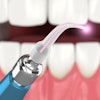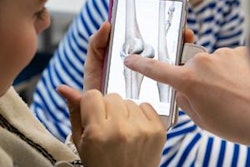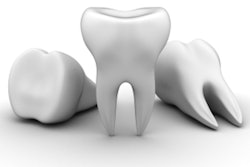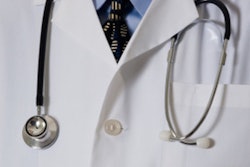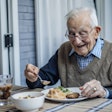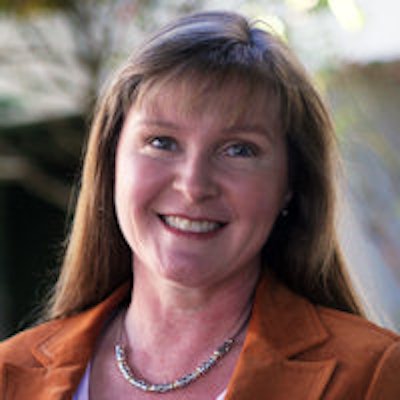
In fall 2015, all 149 first-year medical students at the University of California, San Francisco (UCSF) learned how to perform a basic oral health screening and apply fluoride varnish -- the first of many steps to better integrate dental with other healthcare professions at UCSF.
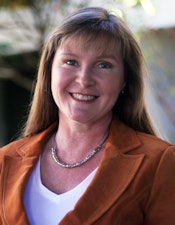 Susan Hyde, DDS, MPH, PhD, is the interprofessional education faculty lead for dentistry and chair of the division of oral epidemiology and dental public health at UCSF.
Susan Hyde, DDS, MPH, PhD, is the interprofessional education faculty lead for dentistry and chair of the division of oral epidemiology and dental public health at UCSF.During the session, fourth-year dental students and dental faculty taught small groups of freshmen medical students about the oral-systemic health connection, the difference between periodontal health and disease, and caries. The model of education, called interprofessional education, allowed for both groups of students to learn more about the other's profession.
"Interprofessional education is not just dental faculty going in, lecturing, demonstrating, and then walking out again. That is not interprofessional education," Susan Hyde, DDS, MPH, PhD, said in an interview with DrBicuspid.com. Among her titles, she is the interprofessional education faculty lead for dentistry and the chair of the division of oral epidemiology and dental public health. "Interprofessional education is when students learn with, from, and about each other and their professions."
To fully understand the interprofessional education program and why it was needed, we have to backtrack to how the oral health education session started.
"Medical school students know very little about teeth and gums."
It was April 2014 and Walid Hamud-Ahmed, class of 2017, was just finishing up his first year at the UCSF School of Medicine. Through a conversation with his wife, he realized that although he had learned how to screen a patient from head to toe, he didn't learn anything new about the mouth.
"I realized the medical school students know very little about the teeth and gums," he said. "It wasn't really discussed. We weren't educated on it."
So Hamud-Ahmed and his wife decided to come up with a survey to find out just how much first- and fourth-year medical students at UCSF knew about oral health -- and it wasn't a lot. Most medical students don't even know how many teeth an adult is supposed to have, according to Dr. Hyde.
"We started with a survey that we sent out to the medical school class to see if there's an interest. ... It turned out to be something real," Hamud-Ahmed said. "There was a demand for more oral health and learning in our curriculum."
With 2014 in full swing, he believed an oral health component needed to be added to the medical school curriculum. He ended up presenting his survey during a summer research symposium, where he met Jean Calvo, a UCSF dental student.
Calvo, who is on track to get her Master of Public Health from Harvard in 2016 and then her Doctor of Dental Surgery from UCSF in 2017, was described by those involved as a "go-getter," "machine of productivity," and "unbelievable."
"Turning the typical HEENT ... into the HEENOT."
Humad-Ahmed and Calvo worked together, with Humad-Ahmed bringing in some professors from the medical side and Calvo working on the dentistry side, including introducing the idea to Dr. Hyde.
One of the early challenges was getting the medical faculty to do the program at all. Adding additional material, even a two-hour session on oral health, is a big deal.
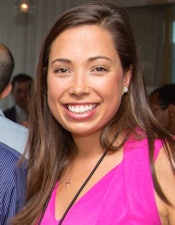 Jean Calvo helped start this aspect of the interprofessional education program at UCSF. She is currently at Harvard pursuing her Master of Public Health and is expected to complete her dentistry degree in 2017.
Jean Calvo helped start this aspect of the interprofessional education program at UCSF. She is currently at Harvard pursuing her Master of Public Health and is expected to complete her dentistry degree in 2017."This was a big commitment from the School of Medicine," Dr. Hyde said. "They're redesigning their curriculum, and they committed to including oral health into their curriculum, which meant that something else had to be reduced or eliminated so that we had that time."
The team crossed its first hurdle -- getting approval -- in fall 2014. Throughout the rest of 2014 and into early 2015, the group had to create a curriculum that worked with the "flipped classroom" model of the medical school, in which the students watched an online lecture the night before and then practiced the skills in the classroom.
"Making the actual curriculum took a lot of time -- to create a lecture, to record an online lecture, to create videos that the medical students watched about how to do an exam and how to do the fluoride varnish," Calvo explained. "It was a very immersive project but a lot of fun."
The team modeled the curriculum after 2014 guidelines released by the U.S. Department of Health and Human Services' Health Resources and Services Administration (HRSA) detailing the integration of oral health and primary care practice.
"It's basically turning the typical HEENT -- head, ears, eyes, nose, and throat exam -- into what we call the HEENOT, adding that 'O,' adding that all important oral to the traditional head and neck exam," Dr. Hyde explained.
Which brings us back to fall 2015, when the medical students were learning about dental health through interprofessional education. They watched Calvo's 30-minute narrated presentation beforehand and came to class ready to learn from the dental students on how to do an oral exam and provide fluoride varnish.
"We're not expecting them to be dental students," Dr. Hyde said. "But if they need to write a referral to a dentist later on, they can use some very common landmarks."
Highly well-received
From everyone's perspective, the oral health sessions went well. The dental students learned more about what future doctors do and don't know about the mouth, and the medical students learned skills that will help them be better doctors.
"A lot of people don't have access to dental care ... and some people aren't aware that young children specifically should be seeing a dentist. In a lot of rural and underserved areas, there aren't any physical dentists to see a patient," Calvo said. "In those situations, a physician can do a lot of good by knowing how to do a very basic examination and a very basic prevention, like fluoride varnish."
"This peer-to-peer aspect is an important piece of what we introduced, and it was really highly well-received," Dr. Hyde said. "I got a really nice letter from the course director at the medical school saying that the evaluations were phenomenal, and we're all really interested in continuing this and building upon it."
The program went over so well that they're not only continuing it but expanding it. Oral health will be added in a meaningful way to the second-year medical student's curriculum, meaning that these first-year students will get to continue their oral health education, Dr. Hyde said. In the 2016-2017 school year, this same oral health session will also be taught to nursing school students, ideally at the same time as medical school students.
"It would be great if we could coordinate schedules so that the nursing students are learning with the medical students being taught by the dental students," Dr. Hyde said. "That could be some really interesting synergy going on there."
"Students were able to implement it."
When you stop and think about all the moving parts and people to bring this idea to fruition, it is surprising that the team was able to pull it all off within a year.
It started with Dr. Hyde, who referred to three of the dental students involved, including Jean Calvo. And it was Calvo who said the story wouldn't be complete without Walid Hamud-Ahmed -- it was his idea after all. And Hamud-Ahmed said the survey was also created by his wife, Haleema Alyasaie, and this is all without the discussion of the medical faculty side, such as Heather Nye, MD, an associate professor at UCSF.
It certainly felt as if it took a tangled army of people just to get one oral health component added to the medical school program. And maybe this is why although organizations push for interprofessional education and collaboration, it's often hard to find real-life examples.
Fortunately, now that this team has put in the work, they're creating a way for other schools to implement what they did, and Dr. Hyde is working on a paper detailing their process. But perhaps the students creating the project proved to be the best example of interprofessional education and collaboration of all.
"It was really great to be on a student-led project. That's what feels most amazing about it," Calvo said. "It was a student's idea, and students were able to implement."



